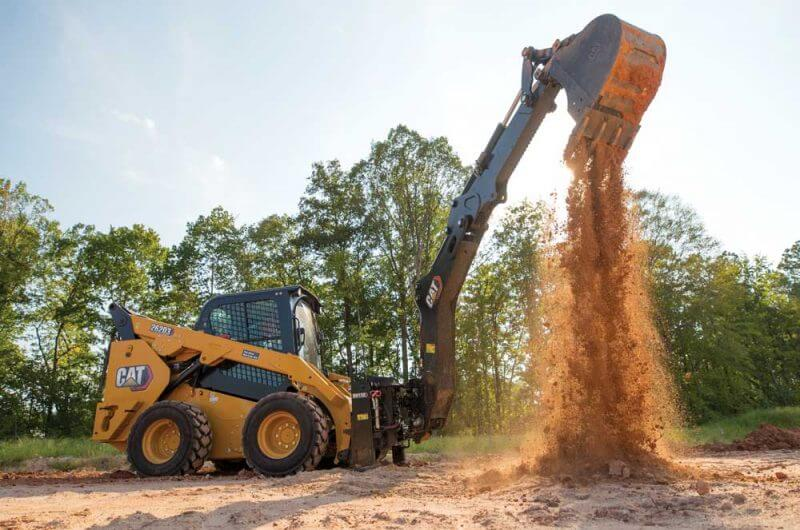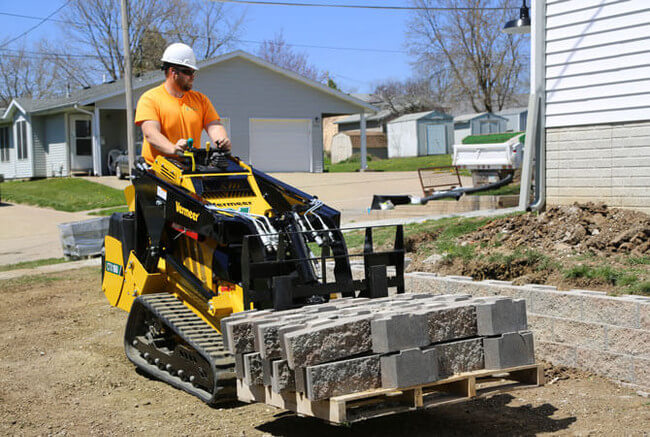Introduction
The hydraulic system is an important factor to consider when considering maintaining the skid steer loaders. Hydraulic fluid is the lifeblood of the skid steer loader. Employing a hydraulic system, the tracks (or wheels) are propelled, and certain parts are lubricated. It also can be used to attach hydraulic tools. Attachments work so well because of the fully functional hydraulic systems.
You need to use attachments with your skid steer to perform grading and soil compaction. These attachments are put in place to ensure that the loader has the tools it needs to handle demanding tasks. They guarantee that your time on the job is well spent. Therefore, the hydraulic system requires maintenance just like any other part if you want your attachments to perform at your best. You need to know how to properly maintain your skid steer’s hydraulic system.

Operators will notice a decrease in performance when a hydraulic system is not functioning at peak capacity. Inevitably, you will run into issues, and the equipment will break down entirely in the worst-case scenario. Preventative maintenance is essential to the longevity and secure operation of hydraulic attachments.
While not all attachments require regular hydraulic service, those that do definitely benefit from it. Here we have discussed some considerations that owners and operators should keep in mind about hydraulics.
What Is a Skid Steer?
The compact and multipurpose skid steer is also known as a skid loader or wheel loader. They are commonly used for digging purposes. It’s easy to move anywhere and doesn’t weigh much. Its arms can accommodate a wide range of equipment for building and landscaping.
The skid steer loader may have four wheels or two tracks. Axles can be controlled separately from the other side of the machine, but they always move in synchrony. It is impossible to cause the wheels to stray from their perfectly straight and aligned position.
In order to turn, a skid steer operator must increase the speed of the wheels on one side. This will cause the wheels to skid or drag across the ground. As a result, the machine turns in the opposite direction. The machine gets its name from this feature.

The Importance of Maintaining Hydraulics
To understand the basics of hydraulic maintenance, it is necessary to first understand why they are so important. The hydraulic components of your skid steer are vulnerable to wear and tear over time. This is because they provide power to the skid steers.
If this happens, your devices may not receive enough energy when you need them most. That may damage the system completely. Proper care of a hydraulic system ensures the highest possible pressure in the cylinder and the cleanest, free-flowing fluid.
Also, it ensures that the machine’s cylinders and motors are moving as they should be. This results in maximum power for the tool and its attachments. You should constantly double-check your system even if you are confident it does not need further maintenance.

Routine Maintenance Tips for Hydraulic Systems
There are a few key considerations to keep in mind to keep your skid steer’s hydraulic system running smoothly. These systems, like any other, need routine maintenance. This will keep them in top shape and ensure they always work at their best. Before removing the components, check or change the fluid.
The best practice is to clean the area around the hydraulic filters. Do not let any fluids seep out of their container. Always pour straight from the container into the system. The fluid and filter need to be changed after 50 hours of operation.

Read Your Instruction Manual
Your first step should be to look at the skid steer’s user manual. There is a manual included with every piece of machinery. It details the functions and upkeep requirements of the device. As a result, you must make use of this manual to learn the servicing specifications of any hydraulic system.
Following the manual’s recommendations for inspecting, fixing, and maintaining the parts will ensure optimal performance.

Perform Routine Component Checks
Setting up a routine inspection program for hydraulic parts is crucial. Regular checks like that are critical for spotting damage and other problems before they start affecting your machine’s performance.
To make sure everything is running smoothly, you will need to perform daily, weekly, and monthly checks. The frequency with which you should inspect various parts is also detailed in the manual.

Keep the System Clean
One of the most common causes of breakdown in hydraulic systems is contamination. Removal of dirt and debris from the system is required. The interconnects between components are a common entry point for debris and grime. Each time they make contact, grime has the chance to infiltrate the circuit. Couplers can get stuck if dirt gets into the system. In the worst case, it could cause leaks.
Clean the couplers with a dry towel before connecting them. Make sure you clean the couplers and store your hydraulic attachment in a dry place. For hygienic maintenance, a simple plastic bag sealed with a rubber band may do the trick.

Check the Hydraulic Fluid Level
The level of hydraulic fluid should be checked as part of your standard preflight procedures. It’s a simple process with potentially huge payoffs. Get plenty of the liquids ready. Your pumps could be severely damaged if this is not the case.
It is important that the fluid is clean and that there is little variation in the volume from day to day. Changes in fluid levels may be an indication of a more serious issue. These can be a leak, a worn-out seal, or a cracked hose. Always make sure the fluid level is full before using this machine.

Use Recommended OEM Oil
Using materials that are compatible with your machine’s layout is vital. Original Equipment Manufacturer (OEM) oil is the type of lubricant used by the company that made your skid steer machine.
It’s the optimal oil for your skid steer, ensuring its hydraulics work as efficiently as possible. Thus, you must maintain your hydraulic system using the correct OEM oil.
Keep Grease Points Lubricated
The purpose of grease is to keep moving parts lubricated. The best practice is to make sure that grease spots are always greased. These parts help generate force and include hydraulic pistons and any moving bolts. Moving these parts up and down can easily generate pressure and force if you lubricate them. This will allow your attachment to do its job.

Best Operating Practices for Hydraulic Systems
It’s not enough to just perform routine maintenance on your skid steer’s hydraulic system. You also need to be careful when using it. When used properly, their gear can reduce the load on the system. This, in turn, reduces the risk of permanent damage.
It will decrease the likelihood of experiencing significant wear or malfunctioning components. These are some recommended procedures to keep in mind.
Use Only Compatible Attachment Products
Some skid steer attachments won’t work with your machine due to poor attachment performance and premature wear. This situation arises because of components that do not fulfill the required flow and weight standards.
Verifying that a device’s components are compatible with the accessory. It should be done before making a final buying decision. Check the hydraulic flow of each model against your skid steer before making a purchase.

Ensure Proper Attachment Connection
There can be various attachments available for skid steers. Aligning your skid steer and attachment properly is also crucial. This will allow the most efficient flow of hydraulic fluid to the attachment tool. So, the highest amount of power may be transferred, and the product’s potential can be extended. Make sure you have a firm grip on the machinery and that everything is secured in place at all times.
Don’t Exceed Machine Output
Skid steers have a maximum power output for each of their hydraulic systems. Going over that limit might harm the machine. This means you should be cautious when operating your machine. You must keep an eye on how far you are driving your tools.
Leaving your machine on for too long might cause it to overheat and fail, just like an engine. Because of this, you need to space out your attachment uses and give the skid steer time to cool down in between tasks.
Clean Auxiliary Hydraulic Fittings Before Connecting
Used skid steer equipment leaves a film of grime on the hydraulic connections and hoses. However, this is a normal occurrence during the use of a hydraulic system. It could potentially reduce efficiency if not controlled. Make it a habit to clean these connections every time you install a new tool to ensure optimal performance.
Final Thoughts
The durability of your skid steer and its attachments depends on your ability to diagnose and fix any problems with its hydraulic system. We recommend that operators check these items daily or weekly before each use. Proper care of a hydraulic system can be guaranteed if operators follow the guidance and instructions provided in the operation manual.


